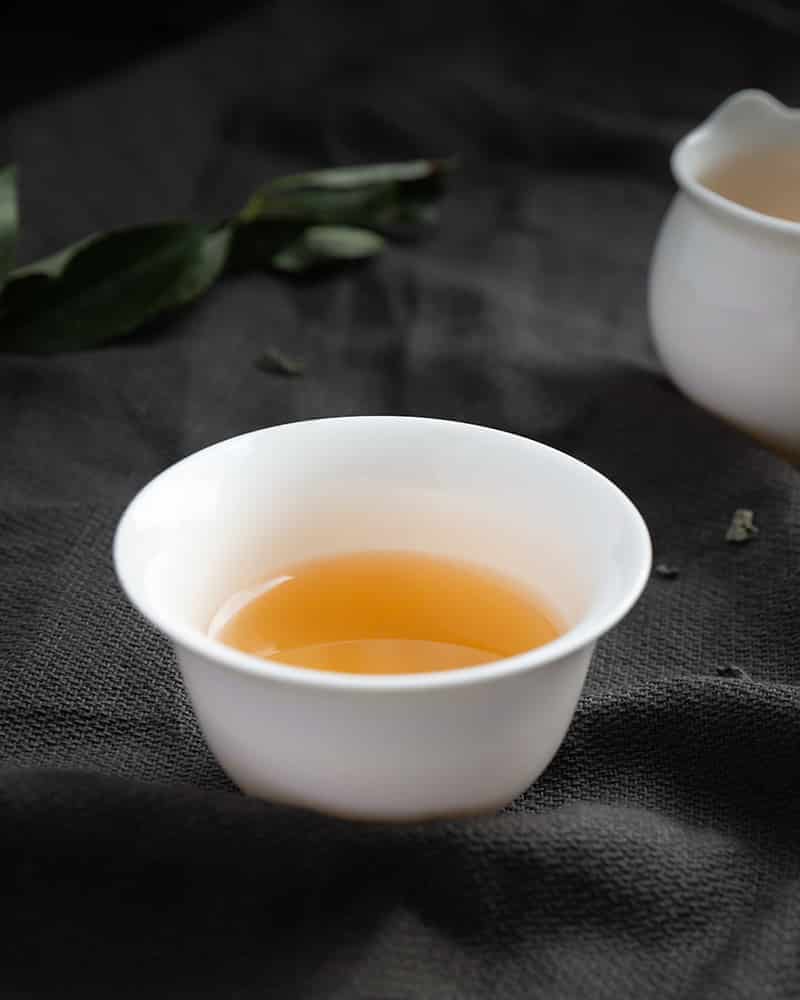White tea
White tea is considered to be one of the most delicate tea varieties due to the fact it’s so minimally processed. White tea is harvested before the tea plant’s leaves open fully, whilst the young buds are still covered with the fine white hairs, hence the name is derived as “white” tea.
These buds and unfurled leaves are handpicked from the newest growth on the tea plant. It is then quickly and meticulously dried, so the leaves are not allowed to oxidize as long as leaves plucked for green or black tea production. This minimal processing and the low oxidation process are available in a number of the most delicate and freshest white teas.
White tea origins
A tea custom advanced all through the era of early Chinese imperial dynasties (between 600 and 1300) when tea consumption and tea lifestyle was flourishing across the country. The custom was for citizens to pay a yearly tribute to the Emperors of the time in the form of rare and delicious teas. Kind of like a tea tax. This imperial tea tribute was commonly made from the youngest, most fresh, and most delicate buds from the best tea plant life.
Imperial tea gardens have been evolved, once in a while in secret, to domesticate these uncommon, honoring teas. These imperial tea tributes are considered the earliest kinds of white tea, but they aren’t the white tea present today. During Emperor Huizong’s rule of the Song Dynasty, younger tea buds would be plucked in the spring, steamed, and stripped of their outer leaf. It would then be meticulously rinsed with spring water, carefully air-dried, and then crushed into a silvery-white powder. This white powder could be whisked into hot water to create the finest tea available to the only man or woman in China that could afford it, the Emperor.
Types of white tea
The white tea found today was first commercially produced from the first white tea plant varieties found in China’s Fujian province in the 1700s named Da Bai and Da Hao. A loose-leaf version of white tea was developed from these plants known for producing large and exquisite tea buds.
As these minimally processed and delicate teas crafted from young buds were difficult to store and transport without spoiling, white teas have been rarely available out of the tea developing regions in the Fujian province. As loose leaf tea production strategies improved, the method for creating white teas elevated beyond the Fujian province and into other regions of the world thirsty for an extraordinary and brilliant tea.
The caffeine content in
white tea
White tea is commonly lower in caffeine than green or black tea. The authentic Fujian white tea plant native to China has been proven to be lower in caffeine than other tea plants. But different forms of tea plants around the world have been cultivated for white tea which won’t be much low in caffeine.
Some research even displays that white teas may comprise as much or greater caffeine as green or black teas, depending on where they have been cultivated and how they had been processed. Ultimately, the caffeine content in any beverage brewed from a caffeinated plant varies relying on many elements, where the plant was cultivated, how it was processed and the manner it was brewed to your cup.
Buying and storing white tea
Tea won’t go “bad”, it can get stale. To make sure you’re getting the most up to date tea you could sip, make sure, and purchase it from a reputable place that could let you know the way the tea was processed and packaged.
White tea requires similar storage strategies as green tea. These lower oxidized teas can remain sparkling up to 12 months if cared for properly.
Always store tea in a cool place
Tea will last longer if stored in an opaque, airtight container.
Keep your tea away from heat, light, oxygen, and moisture, and never store tea inside the refrigerator.
Don’t permit the tea to be in the pantry with items like coffee and spices that can leach their flavor into the tea leaves.
Preparing white tea
Always begin by checking the box for brewing instructions precise to the tea you purchased, because specific white teas can have unique best brewing temperatures and steeping times.
But here are some good white tea brewing tips to keep in mind
Step 01
Some white teas may be brewed a little longer and in slightly warmer temperatures than green teas.

Step 02
Generally, this is somewhere around 190 ranges for three to five minutes.
Step 03
But others are more delicate and have to be handled like a green tea, steeping for two to three minutes in water temperatures of 160 to 180 levels.

Step 04
White tea is a little extra forgiving than green or black tea on the subject of steeping time.

Step 05
But you don’t have to over steep your tea or it can release some bitterness and astringency.

Step 06
Taste your tea after the recommended steeping time and then determine if you’d like it to steep a little longer.

Step 07
If you don’t have an electric kettle with temperature control, just keep in mind that at sea degree water simmers at 190 degrees and boils at 212 degrees.

Step 08
The boiling temperature drops about a degree for every one hundred feet in altitude increase.

Step 09
Generally, someplace just under a simmer must be ideal for brewing your white tea.

Step 10
If your white tea got delivered with unique pointers for brewing, use those.

Step 11
Always start with sparkling, pure, cold filtered water whilst brewing tea.

Step 12
Cover your tea whilst it steeps to preserve all the heat within the steeping vessel.

Step 13
Most notable loose leaf white teas can be steeped a couple of times.

Step 14
White teas are so delicate and diffused that they are best enjoyed plain, without an additive like milk or sugar, which will recognize the tea’s true flavor.
Benefits of White Tea

White Tea offers many health benefits to its drinkers. Some of which are known and some of which are unknown.
Insulin is a vital hormone. It helps to move nutrients from the bloodstream into the cells to use or to save for later. However, as a result of several factors, along with high sugar consumption, some people forestall responding to insulin. This is referred to as insulin resistance.
Sadly, insulin resistance is very common and is linked to many continual fitness conditions, along with type 2 diabetes, heart disorder, and metabolic syndrome. Interestingly, studies have determined that polyphenols just like the ones in white tea may also lower your threat of insulin resistance. Animal studies have discovered that EGCG and different polyphenols discovered in white tea might also enhance the effects of insulin and save you from high blood sugar levels.
In an evaluation of studies with over one hundred people, scientists found that the molecules in teas, like polyphenols, substantially decreased blood sugar and insulin levels. While the studies appear promising, more human-based studies particularly on white tea will assist to make it clear whether it may reduce the danger of insulin resistance.
Osteoporosis is a health condition in which the bones become hollow and porous. This is a major health effect and might cause heavy pains later in life. It influences as many as 44 million people over the age of 50, and may also result in fractures and lower health.
Studies have proven that free radicals and persistent inflammation can also accelerate osteoporosis. These two elements may suppress cells that aid bone growth and promote cells that break down bones. Conversely, catechins that have been observed in white tea have been proven to combat those risk factors.
They’re thought to suppress cells that damage bones. These catechins are abundant in white tea in comparison to different varieties of teas. Osteoporosis is common among the aged and may cause fractures. Compounds found in white tea, which include the polyphenols called catechins, can also decrease the risk of osteoporosis by promoting bone growth and suppressing bone breakdown.

The bottom Line
White tea is full of antioxidants, which makes it an incredibly wholesome tea. Studies have linked white tea and its components to a variety of impressive fitness benefits, consisting of a decreased risk of heart failures and cancer. It may also help you lose weight. Sadly, white tea has not been studied as much as other teas, like green tea, because it’s now not as popular as green and black tea. More human research on white tea might help clarify its fitness benefits. All told, white tea is a wonderful addition to your weight-reduction plan and it is simple to prepare. It has a subtle yet refreshing taste and can be enjoyed as hot and as a cold brew.
Silver tips or more referred to as “White Tea” is a healthy choice that can be added to your regular lifestyle to be healthy and fit as long as you live.
